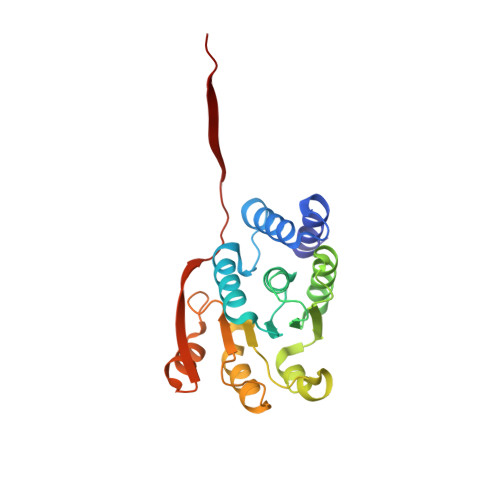Effects of Active-Site Modification and Quaternary Structure on the Regioselectivity of Catechol-O-Methyltransferase.
Law, B.J., Bennett, M.R., Thompson, M.L., Levy, C., Shepherd, S.A., Leys, D., Micklefield, J.(2016) Angew Chem Int Ed Engl 55: 2683-2687
- PubMed: 26797714
- DOI: https://doi.org/10.1002/anie.201508287
- Primary Citation of Related Structures:
5FHQ, 5FHR - PubMed Abstract:
Catechol-O-methyltransferase (COMT), an important therapeutic target in the treatment of Parkinson's disease, is also being developed for biocatalytic processes, including vanillin production, although lack of regioselectivity has precluded its more widespread application. By using structural and mechanistic information, regiocomplementary COMT variants were engineered that deliver either meta- or para-methylated catechols. X-ray crystallography further revealed how the active-site residues and quaternary structure govern regioselectivity. Finally, analogues of AdoMet are accepted by the regiocomplementary COMT mutants and can be used to prepare alkylated catechols, including ethyl vanillin.
Organizational Affiliation:
School of Chemistry & Manchester Institute of Biotechnology, University of Manchester, 131 Princess Street, Manchester, M1 7DN, UK.


















